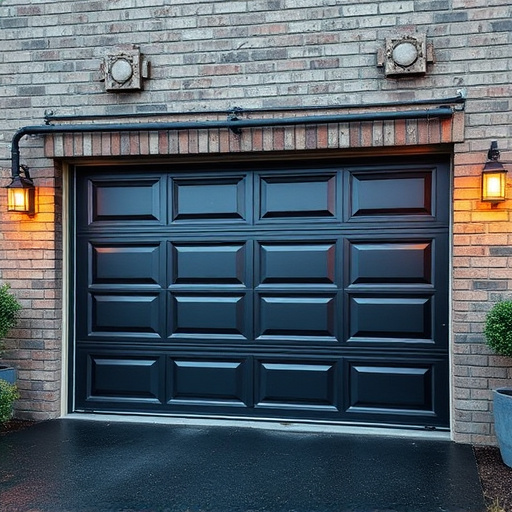Underlayment, a critical component of any successful flooring install, provides essential protection and support for various floor types. It acts as a shield against moisture, temperature fluctuations, and subfloor imperfections, ensuring longevity and stability. Key options include foam (ideal for sound absorption but moisture-sensitive), fiberboard (durable for high traffic but prone to moisture), and cork (offering customizable bounce, noise reduction, and eco-friendliness). The best underlayment varies by project needs: rigid for low traffic, flexible foam for high moisture or noise reduction. Getting this critical step right ensures a beautiful, long-lasting finish in any flooring install project.
A smooth, durable floor starts with a solid underlayment. Understanding this crucial component is essential for any successful flooring install project. This guide breaks down the key elements of underlayment, delving into its role as a foundation and exploring diverse materials with unique pros and cons. Learn how to choose the optimal underlayment tailored to your specific needs and ensure a long-lasting, visually stunning finish.
- Understanding Underlayment: The Foundation for Smooth Flooring
- Types of Underlayment Materials: Pros and Cons
- Choosing the Right Underlayment for Your Flooring Install Project
Understanding Underlayment: The Foundation for Smooth Flooring

Underlayment is a crucial component in any flooring install, serving as the protective base that ensures smooth, long-lasting results. It acts as a barrier between the finished floor and the subfloor, providing stability, noise reduction, and insulation against moisture, temperature fluctuations, and existing floor imperfections. A well-chosen underlayment directly contributes to the overall quality of your flooring, making it essential for both residential and commercial flooring install projects.
Whether you’re planning a dramatic home transformation or subtle bathroom renovations, understanding your underlayment options is key. Different types of underlayments are designed for specific purposes and floor coverings, from luxury vinyl to hardwood or carpet. For example, foam underlayments offer superior comfort and noise reduction, ideal for bedrooms or areas where quietness matters. In contrast, rigid underlayments provide greater stability and are better suited for installations that demand more robust support, such as tile or stone floors. Choosing the right underlayment ensures your new floor is not just installed but truly integrated into your space, enhancing the overall home transformations and ensuring longevity.
Types of Underlayment Materials: Pros and Cons

When planning a flooring install, choosing the right underlayment is a crucial step for achieving a smooth and durable finish. Underlayments serve as a protective layer between the floor and the subfloor, providing essential support and comfort. The market offers various underlayment materials, each with its unique advantages and drawbacks.
One common type is foam underlayment, known for its insulation properties and ability to reduce noise levels. It’s an excellent choice for both residential and commercial flooring installs, especially in spaces like kitchens undergoing renovations where sound absorption is key. However, foam can be susceptible to moisture damage and may not provide the same level of load-bearing capacity as other options. On the other hand, fiberboard underlayment offers excellent stability and dimensional integrity, making it suitable for heavy furniture and high-traffic areas. Yet, it’s more prone to absorbing moisture and may require additional treatments to prevent warping. For a customizable work approach in home renovation projects, cork underlayment provides a comfortable bounce, reduces impact noise, and is naturally fire-resistant—a great eco-friendly option for those looking to incorporate sustainable elements into their flooring install.
Choosing the Right Underlayment for Your Flooring Install Project

When planning a flooring install project, selecting the appropriate underlayment is a crucial step that can significantly impact the overall success and longevity of your endeavor. The right underlayment not only ensures a smooth and level surface for your final flooring but also provides insulation, soundproofing, and moisture protection. It’s an essential layer that bridges the gap between your existing subfloor and the new flooring, allowing for customized work tailored to specific rooms, like kitchens and baths, where unique challenges may arise.
Consider factors such as room purpose, traffic levels, and desired aesthetics when choosing underlayment. For instance, a flexible foam underlayment is ideal for areas prone to moisture or those requiring sound reduction, while a more rigid option might be suitable for lower-traffic spaces. Whether it’s part of a renovation service or a new installation, selecting the right underlayment will lay the foundation for a beautiful and durable flooring finish in any room of your home.
When installing new flooring, choosing the right underlayment is key to achieving a smooth, durable finish. By understanding the different types of underlayment materials and their pros and cons, you can make an informed decision tailored to your flooring install project’s unique needs. Remember, the right underlayment acts as the foundation for your new floor, ensuring comfort, noise reduction, and structural support – so don’t overlook this crucial component!














